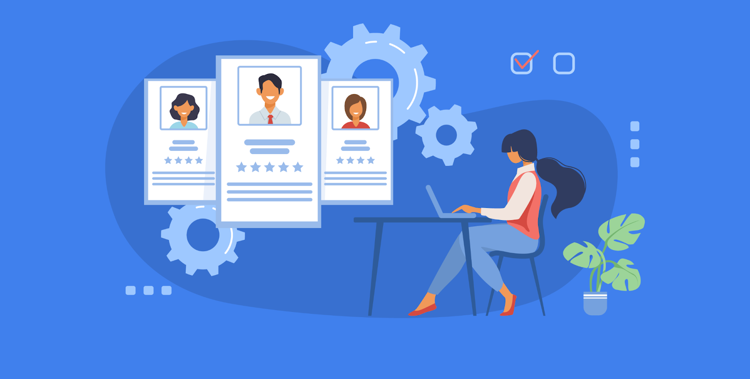Beyond Dawlish
In the contemporary business world, HR management has moved from a straightforward administrative task to a strategic business enabler. Technology has been a significant player in this transition, and two major systems have emerged to help streamline HR processes: Human Resource Information Systems (HRIS) and Human Resource Management Systems (HRMS). But what is it that makes these systems unique? At Martian Logic, we've worked on HR solutions including but not limited to, an ATS, Employee Onboarding Software, and Organizational Charts. In this blog, we're diving into the differences between HRIS and HRMS, and how Martian Logic can take your HR operation to the next level.

What is an HRIS (Human Resource Information System)?
An HRIS is a software system that is designed to help organizations manage essential HR functions. It mainly focuses on data management, as it provides a centralized database to store and retrieve employee information such as personal details, payroll, benefits, time off, and compensation.
Human resource information systems allow companies to keep accurate employee records and ensure compliance with regulatory requirements. Most HRIS systems are usually integrated with other business tools, therefore allowing the HR departments to process high volumes of data.
Key Features of HRIS
Employee Database Management
Payroll and Benefits Administration
Time and attendance tracking
Compliance Management
What is an HRMS- Human Resource Management System?
An HRMS is more comprehensive than an HRIS; it has the features of an HRIS and adds more features of advanced HR management. Features of HRMS include data storage, recruitment, performance management, learning and development, employee engagement, and succession planning.
Unlike HRIS, which is more focused on administrative functions, an HRMS is more performance-oriented, focusing on employee development and strategic decision-making. It is designed to align HR processes with business goals, offering greater flexibility and depth.
Key Features of HRMS:
Recruitment and applicant tracking
Performance and goal management
Employee development and training
Succession planning
Employee self-service portals
The Key Differences Between HRIS and HRMS
While both HRIS and HRMS perform similar functions, there are some differences that distinguish them:
Scope of Functions: An HRIS is mainly concerned with data management, while an HRMS encompasses a wider range of functions that cover the entire employee lifecycle.
Complexity: HRMS systems are usually more complex and feature-rich than HRIS systems, offering a wider variety of tools for performance tracking, recruitment, and strategic planning.
Strategic Value: HRMS is oriented towards strategic decision-making, whereas the organization requires workforce planning and talent management for the workforce. HRIS seems more concerned with day-to-day administrative work.
User Experience: HRMS typically provides advanced, user-friendly interfaces to the human resources teams which seem to allow them to manage performance as well as employee growth in addition to basic data management.
Why Martian Logic is Your Go-To Partner for HR Solutions
At Martian Logic, we know that the decision between an HRIS and an HRMS is not easy. Both have different benefits, but the best choice depends on the size of your organization, goals, and the needs of your HR.
Here's how we elevate HR processes with specialized tools:
Applicant Tracking System (ATS)
Our Applicant Tracking System helps make the recruitment process easier by streamlining job posting, resume sorting, and tracking candidates through interviews. Our user-friendly interface, along with powerful filtering capabilities, ensures that you find the right candidate in much less time.
Employee Onboarding Software
Our Employee Onboarding Software can help you provide an onboarding experience for new hires that is as seamless as possible. Document submission to training schedules, new employees feel welcome and prepared for success while HR teams have a lighter administrative load.
Organizational Chart
Our Organizational Chart tool provides crystal clarity in the display of your company's structure. This helps not only in decision-making and reporting but encourages better cross-team communication so people know what they are supposed to do.
Conclusion: Choosing the Right System for Your Business
The choice between an HRIS and HRMS varies depending on the needs of your organization. If you want to handle employee data effectively, an HRIS would be a good selection. You would consider selecting an HRMS if you are in search of a more integrated solution which goes about the administrative aspects of HR as well as workforce management strategically.




